Uncovering information in the lab: using genetic tools for conservation
In the previous blog, I mentioned collecting tissue samples of the bottlenose wedgefish at various fish landing sites across Malaysia. So what do we do with the tissue samples? These tiny pieces of tissue are interesting because they contain DNA which carries information about the biology and evolutionary history of the species. One of the main aims of this project is to determine connectivity in bottlenose wedgefish populations sampled from various regions of Malaysia. By examining the DNA of individuals from different regions, we can tell if wedgefish are moving across the regions and/or mating with wedgefish from other regions.
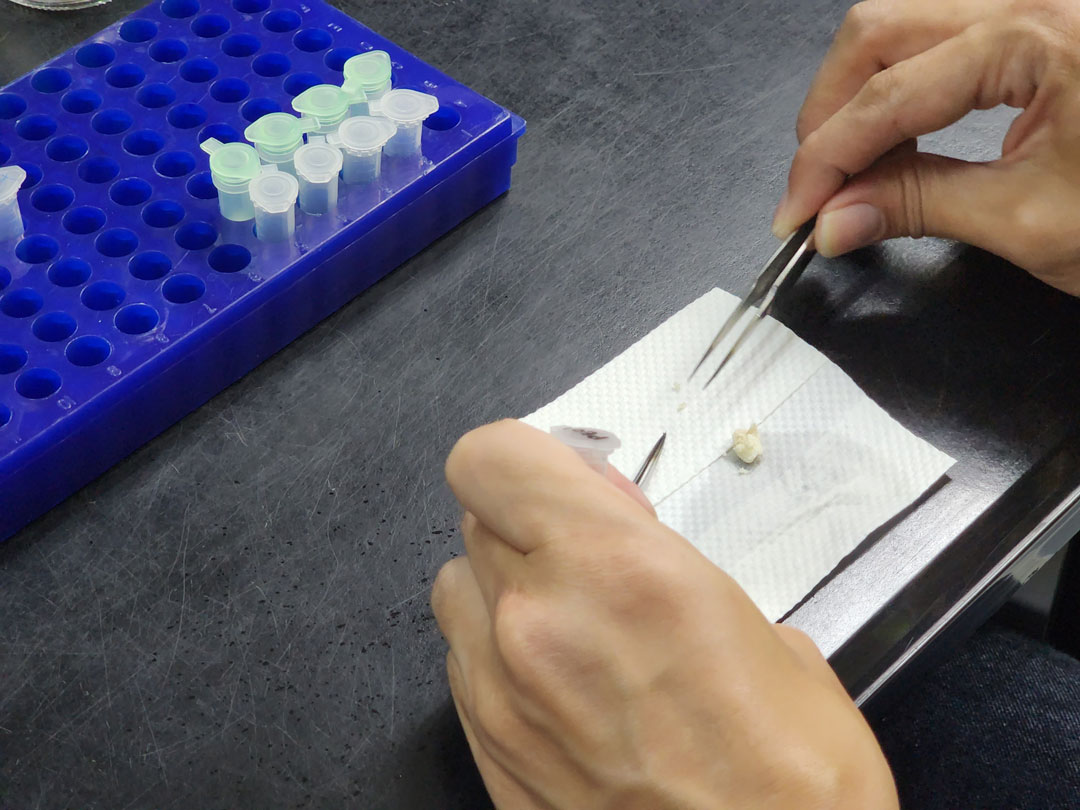
Cutting up wedgefish tissue samples to extract DNA – only a small amount of tissue is needed for genetic analysis. Photo © Amanda Leung
So how do we transform a small amount of tissue into actual DNA? The first step is to extract or isolate DNA from wedgefish tissue. Only a tiny amount of tissue, approximately 25mg (smaller than a grain of rice!), is needed for DNA extraction. We place the tissue in a buffer solution with enzymes or a solution with chelating resin to break down tissue and dissolve cell membranes to release the DNA from the cells. This step of breaking down the cells allows us to collect a few drops of clear liquid (about 0.05ml) containing DNA from each wedgefish individual, which are then stored in individually labelled tubes.
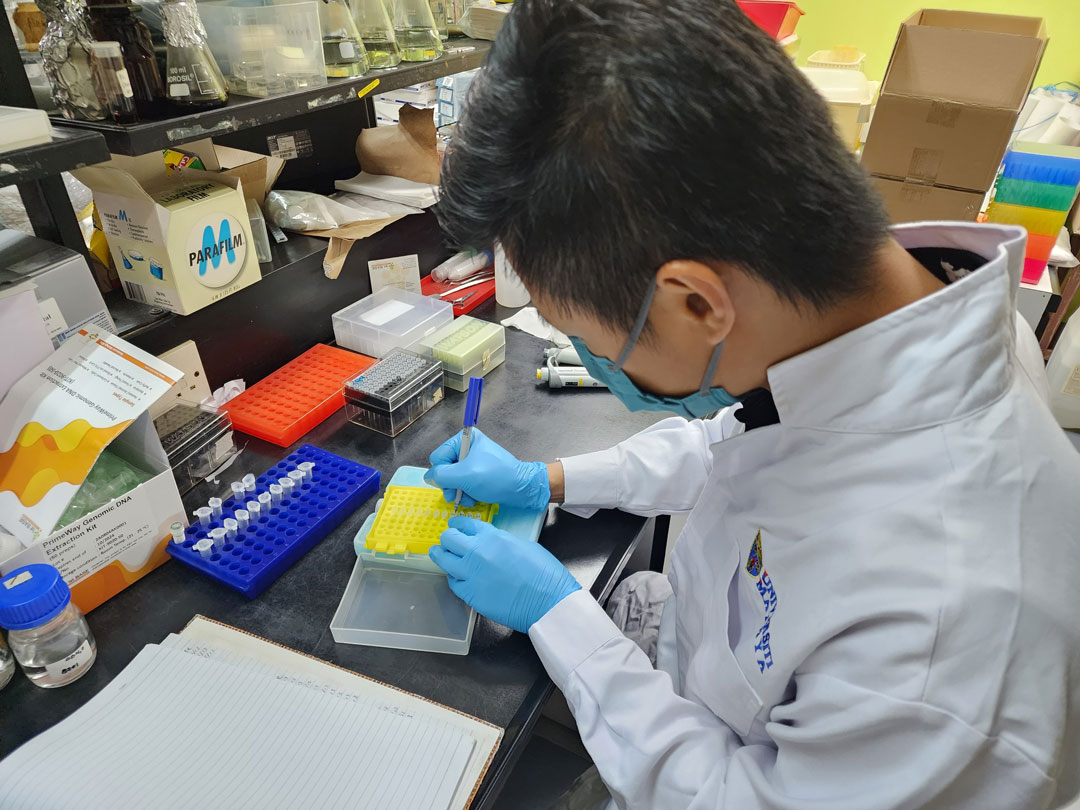
Kean Chong (a PhD candidate at Universiti Malaya) is lending a hand in preparing for a PCR experiment. Photo © Amanda Leung
Next, we amplify a specific segment of DNA using polymerase chain reaction (PCR), a technique used to produce many copies of the specific segment from small amounts of DNA. To check whether the PCR is successful, we run gel electrophoresis with PCR products alongside a DNA ladder to determine if we get the specific segment DNA that we want to work with. Lastly, we can send these PCR tubes to a facility which sequences the DNA segment of interest. The information-rich dataset sent back to us by the sequencing facility allows us to determine the degree of genetic variations between different animals and their relatedness.
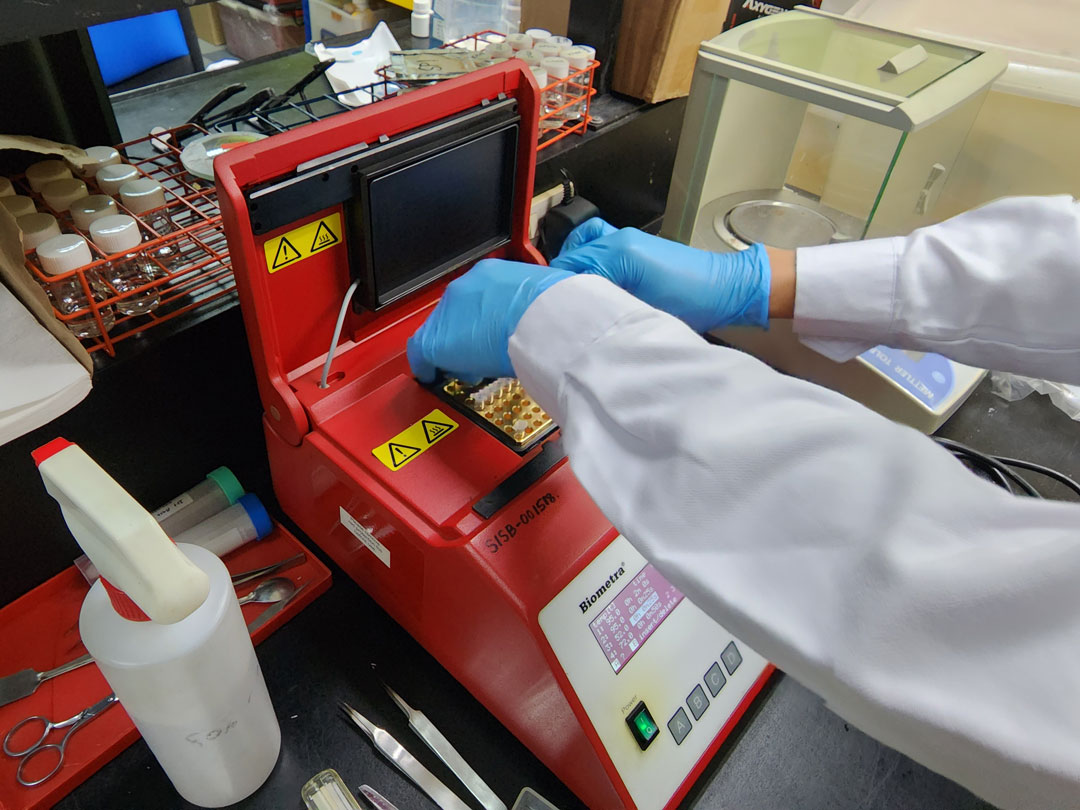
DNA samples are ready to be amplified using PCR method. Photo © Amanda Leung
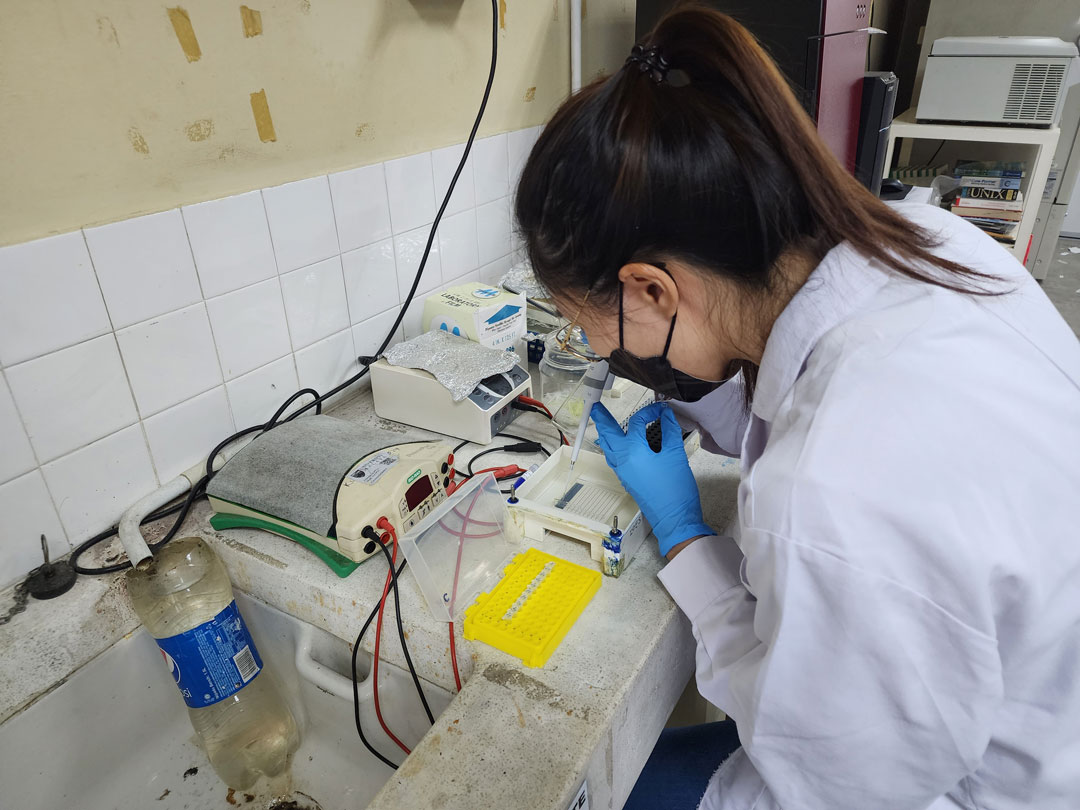
Amanda Leung is loading the PCR products on a gel to run electrophoresis. Photo © Lim Kean Chong
Why is it important to study the connectivity of wedgefish populations? Wedgefish is heavily exploited in Southeast Asia for their fins, and they are susceptible to various fishing gears. Their close association with bottom habitats suggest that they might vulnerable to local overexploitation. However, the patterns of movement and connectivity of these animals across Malaysia have not been assessed. This knowledge is crucial for informing fishery management decisions and conservation to manage wedgefish population(s).
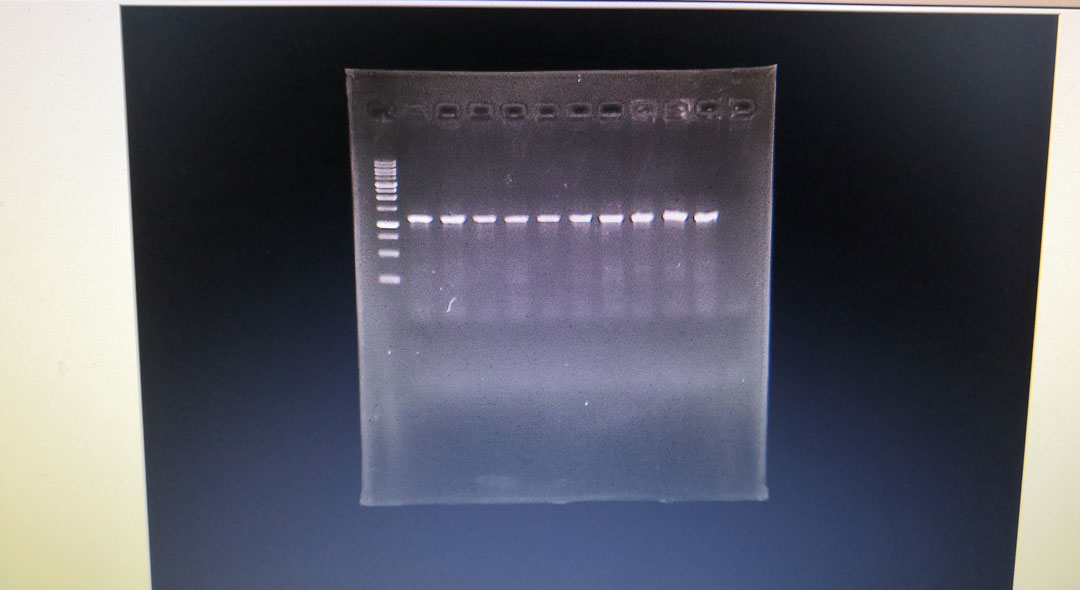
The gel can be viewed under ultraviolet light. The first column is the DNA ladder so that the size of fragments in the PCR samples can be determined. Photo © Lim Kean Chong
